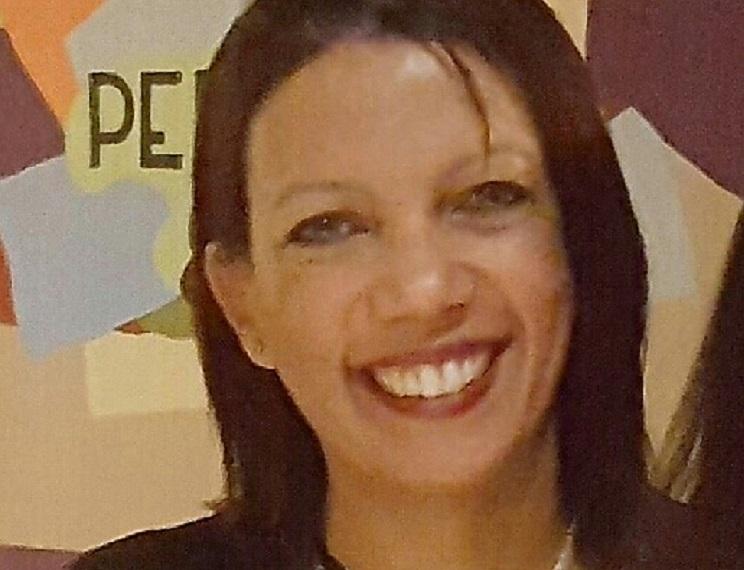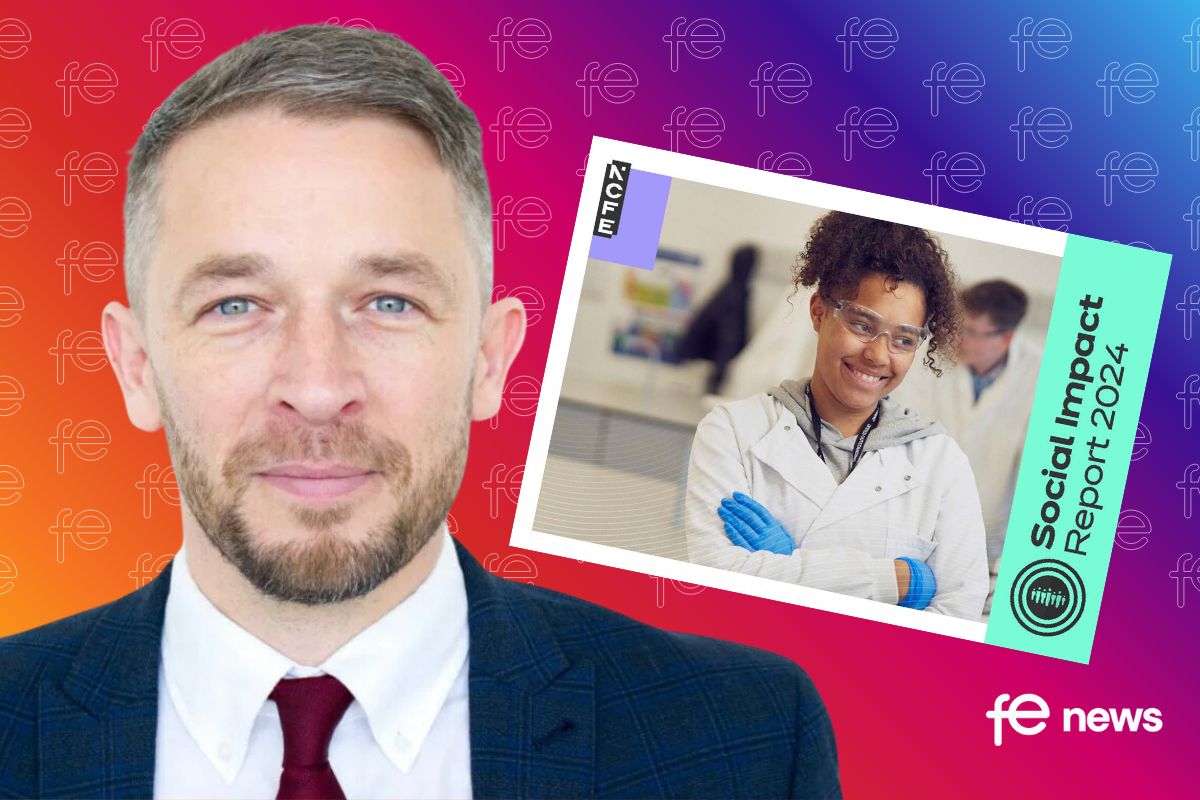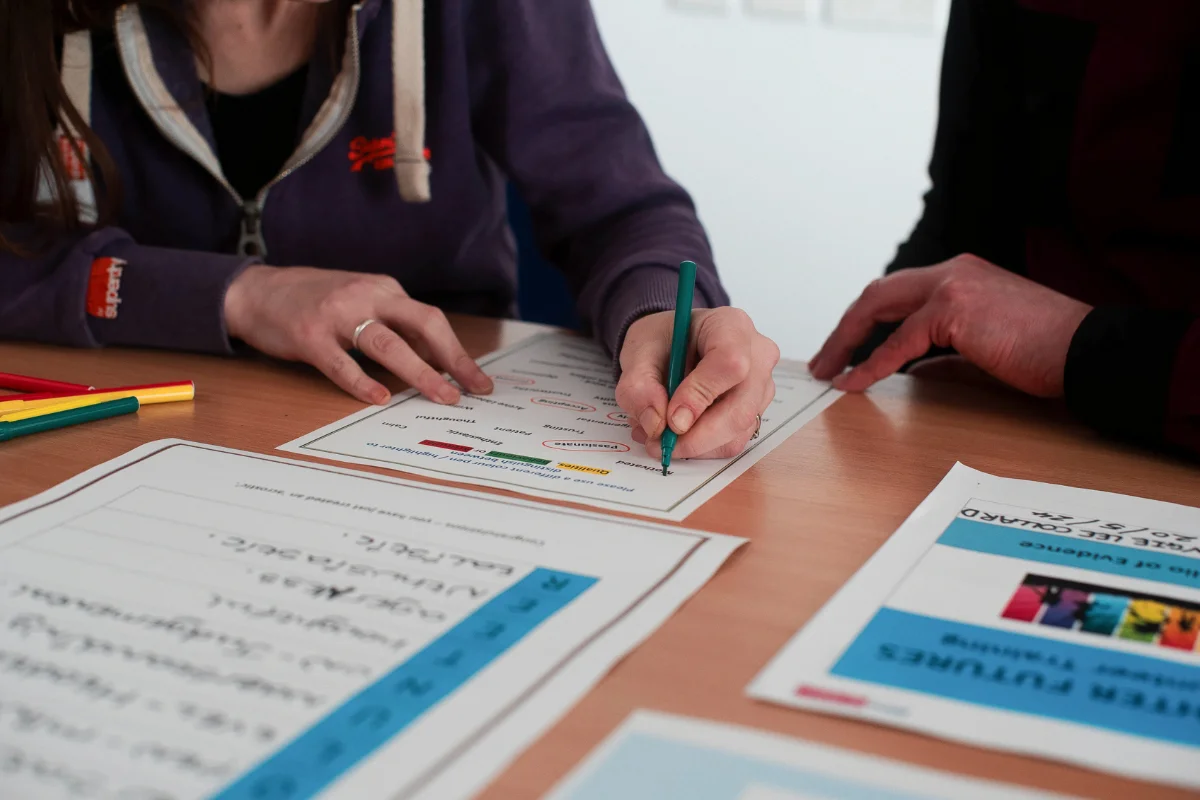We want Education, not Rejection!

A Case Study on NEET and socially excluded youth enrolled on the Skills to Succeed (S2S) course in a Further Education (FE) College
This article critically explores the Level 1 Skills to Succeed (S2S) course, briefly focussing on its curriculum, learning requirements and scope for progression within and beyond the further education (FE) college. Consequently, consideration is given to different levels of study programmes in order to contextualise education and training provision available. Likewise, observation records primarily used for the purposes of illustration to enhance understanding of the S2S teaching and learning environment at this particular institution, named The Hollies
The S2S course:
To start with, consider the following extract advertised on the college website:
“The Foundation Learning Skills to Succeed course is a free learning programme aimed at 16-18 year olds who are not in training or employment (NEET) and wish to gain qualifications in maths and English from entry level to level 2. The Skills to Succeed study programme provides a progression route to employment, vocational study and/or apprenticeships for learners studying at level 1. Programmes aim to equip learners with the skills and confidence required for successful progression by providing a highly supportive learning environment and diverse, exciting curriculum. Learners are provided with a high level of support and guidance, and encouraged to set themselves challenging, achievable goals in order to reach their aspirations. Programmes incorporate a combination of vocational learning, personal and social skills, development and Functional Skills (English and Maths). Enrichment activities are also included in the programme to develop confidence and social skills. This is a full-time course which runs from September to June (35 weeks) or January to July (25 weeks) and is delivered at [satellite campuses].
The excerpt signals that S2S is a full time course aimed at young people who were previously NEET, flagging key academic background, but also contextualising why several students might want qualifications and therefore enrol on the course. Course details emphasized student opportunity to gain qualifications in maths and English, subsequently revealing it pertained to Functional Skills qualifications. Noticeably, the excerpt did not mention GCSE qualifications as an option, although students could also enrol for GCSE classes as part of their main study programmes (advertised elsewhere on GCSE course web details).
Only through discussion with S2S tutors, learning requirements were clarified: students were required to pass Functional Skills maths and English exams alongside the City & Guilds Certificate in Employability and Personal Development so as to complete and achieve the Level 1 S2S qualification. Hence, students completing only one of the above two learning requirements, would therefore be recorded as ‘completed but not achieved’. Details on the learning requirements were evidently essential, yet current details arguably lacked clarity and might therefore not be readily accessible for students and interested parties.
Of particular interest, although S2S is one of several policy initiatives directly aimed to connect NEET young people with work, course details appeared to give less emphasis on employability and work-related training. Classroom observations confirmed that S2S at The Hollies was primarily class-based provision with no employer links.
Despite this, S2S is a free, structured study programme available to all, including those with low or no school leaving qualifications. It sets out to provide a highly supportive environment to students, particularly those at risk of becoming NEET or having previous experience of educational failure. In some respect, the course thus represents a starting point for some, perhaps a second or third chance for others needing qualifications. Besides qualifications, the course also reportedly gives scope for progression onto employment, vocational study and/or apprenticeships.
The Further Education (FE) College:
Adopting a case study approach, my research study has been conducted at The Hollies, a large general FE college located in the South-East of England. The main campus is situated in one of the larger towns, recruiting students from surrounding deprived communities – although the town itself is largely affluent. The college provides a wide range of vocational further education and training programmes, as well as the delivery of vocational higher-education programmes validated by a local University. In particular, the apprenticeship provision is delivered both directly and through a range of subcontractors.
The student profile at The Hollies indicates that in total, there are 13, 310 students enrolled at the College (and satellite campuses). From this total, 5833 (44 per cent) are female and 7480 (56 per cent) are male students. Records indicated a predominantly white student population, the majority being male, and a large proportion of students reportedly having special educational needs, health problems or a disability. On a course level, the student profile of S2S students for the academic year 2014-2015 – on all three campuses – highlights that of the 45 students enrolled on the programme, 31 (69per cent) are female and 14 (31per cent) are male students. Additionally, student records indicate that of the 45 students, 37 recorded they were White British, 2 from Asian origin, 1 White/Black, 1 from Other White descent, 1 from African descent and 1 from Other Mixed origin. Of the 45 students, 24 (53per cent) reported no stated disabilities, whilst 21 (47per cent) indicated they either have a learning difficulty, disability or health problem. Hence, at the time of conducting the research study, the S2S student population was predominantly white, female, a substantial minority reportedly either having special educational needs, health problems or a disability.
Overview of Study Programmes within College
The Hollies offers a large variety of FE courses for 16 to 18 year olds. The courses are predominantly vocational and designed to provide job skills. The College mainly delivers 16 – 19 study programmes including apprenticeships, foundation learning and BTEC (Business and Technology Education Council) qualifications which are work-related qualifications for learners that seek employment, progression through their careers or planning to enter university.BTECs are developed in consultation with employers and higher education experts with the expectation that anyone with a BTEC will demonstrate the high standards of knowledge, practical skills and understanding required for further study and employment (Pearson, 2015). The study programmes are as follows:
i) BTEC qualifications
BTEC Extended Diploma Level 3 is a two year programme, worth 180 credits and is equivalent to three A Levels and allows for progression to university. This course has an entry requirement of 5 GCSEs at grades A*- C including Maths and English and 3 other science or humanities GCSEs (2 of the 5 being at grade B or above). BTEC Level 3 National Diploma is a two year programme, worth 120 credits and is equivalent to two A Levels. The entry require is set as above, but at 4 GCSEs grades at A*- C including Maths and English. BTEC Level 3 Subsidiary Diploma is a one year level 3 programme, worth 60 credits and is equivalent to one A Level. Students from Level 2 can progress onto the Level 3 course if they achieved a relevant level 2 qualification with a Distinction plus English and Maths GCSE at grade C or above. The BTEC Level 2 is a one year extended certificate with a set entry requirement at 4 GCSEs (grades A*-E), including English and maths. Completion of the full Study Programme at Merit/Distinction, including GCSE English and Maths at grade C, enables access to Level 3 courses. The BTEC Level 1 is a one year certificate with a set entry requirement at 3 GCSEs (grades D-G) and an interview. On successful completion of this programme students can progress to a Level 2 qualification or an Apprenticeship.
ii). Apprenticeship provision
The College delivers Intermediate and Advance apprenticeship provision in a wide range of courses. On both programmes, students are required to find an employer to undertake the apprenticeship programme. The Intermediate Apprenticeship is a Level 2 Certificate with an entry requirement of 4-5 GCSEs at grades A* – C including Maths and English, depending on the department that delivers this provision. The duration of the course varies dependent on the qualification. Students have to undertake a basic skills assessment in English and maths, a satisfactory interview with the Apprenticeship Hub team. Entry to the Advance Apprenticeship requires a satisfactory completion of a relevant Level 2 qualification, along with the set entry requirements at 5 A*- C GCSE grades including Maths and English.
iii) Foundation and Supported Learning
Foundation and Supported Learning offers pre-vocational qualifications, alternative education for students operating outside mainstream provision, such as excluded youth, those with disabilities and special educational needs etc. It is a national framework of learning that forms part of the government’s reform of education for 14–19-year-olds, which includes courses such as Skills to Succeed S2S, Learning for Living and Work, Supported Studies and ESOL (English for speakers of other languages)Skills for Life, designed to boost an individual’s skills and confidence to achieve learning goals and progression into employment or further study. The Foundation and Supported Learning framework deliver courses that do not require any formal entry requirements with the exception of the Skills to Succeed (S2S) course, whereby students are expected to predominantly work at Entry Level or Level 1.
iii (i) Skills to Succeed (S2S) course
Up until the previous academic year (2014-2015), there were no formal entry requirements for access to this programme other than the requirement that students should “just desire” to improve their skills for progression on to another programme. However, subsequently, entry requirements are set at 3 GCSEs (grades A*-G), including English and maths, and an interview. The prospectus outlines that S2S provides students with the opportunity to develop their academic, personal and employability skills in order to progress on to Level 2/3 programmes in a variety of subject areas across the College or an apprenticeship. Progression routes available for S2S students, are advertised to provide access to full-time courses /Apprenticeships including Business and Administration, Public Services, Carpentry, Construction, Health and Social Care, Childcare, Motor Vehicle, Music, Health and Beauty, Art and Design, Travel and Tourism, Employment in the construction industry, retail and care homes, the Prince’s Trust and the Level 2 Skills for Enterprise.
The S2S Classroom
S2S provision was located in a green, temporary prefabricated building on the outskirts of a large FE college. Known as Q-block, the building is primarily used to deliver programmes for non-traditional students, i.e. NEET young people, disabled students, ESOL (English for speakers of other languages), Access to HE and Adult learners on Welfare to Work programmes. The surrounding environment entails the car park, bike shed and smoking area.
A large car park separates Q block from the rest of the buildings – mainstream provision on the opposite ends delivering a range of vocational courses and apprenticeship training. It is also furthest from the Higher Education building, the college gates and security guards. S2S and similar Foundation learning programmes thus seem separate from the operations of this large institution. Not gone unnoticed, both students and tutors that participated in the study commented on the ‘separateness’ from wider college. Students in the focus group observed that there are “always people running, shouting, hitting walls, someone kicking off around the corner”. This resulted in another student saying, “Oh my god we sound like we’re talking about a Mental Home” (Focus group data, June 2014). Staff members, on the other hand, reported feeling vulnerable, as the building was some distance from security staff, a resource regularly used when having to deal with safety and security issues in lessons (Staff interview data, June- July 2014).
The college library is also in Q block, although S2S students rarely use this facility for study purposes. Instead, the library was mainly used as ‘cooler’ to banish latecomers. Though library services were available for students to access, students were instead kept in class to search online for information.
The classroom…
Classroom facilities were clean and spacious. The room consists of an interactive white board and the required classroom furniture. The classroom was laid out in a ‘horseshoe’ shape with tables and chairs for written tasks, and along the far corner near the windows 18 computers were stationed. There, students accessed computers to undertake project work and online tests.
4. Example of a morning session on S2S
The following extract comes from field notes. The aim is to describe the teaching and learning environment in the classroom (observation undertaken – 04 December 2015).
8.57 am: I arrive at the classroom. Gina (S2S practitioner) and Mandy, her Learning Support Practitioner (LSP), along with 5 out of a possible 15 students were present at the time. They were later joined at 10am by 3 other students. The lesson is on Managing Personal Finance and is timetabled for 3 hours with a 30 minute break scheduled for 10.30am. Officially, class should start at 9am, but regularly starts at 9.30am with the explanation that some students might arrive late – so it was better to start later. This seemed customary, the rest of the students seemed untroubled – either chatting amongst themselves, whilst others were playing on their phones.
Tutor:- “I’m meant to have 15 students…1 rang to say he will be late, 1 student has safeguarding issues, another student comes by train. Two students have part time jobs, so when the boss rung them in the morning, they go…”.
At 9.30 am Gina starts the lesson – immediately drawing the class’s attention to the classroom rules, highlighting 4 main issues written on the whiteboard. On a separate board (pictured below), rules were pre-written with student initials in the first column.
Classroom rules written on separate whiteboard:-
Use of phones in lessons – phones to go in bag.
Swearing or rudeness – need to use appropriate language – classroom is the space to learn appropriate behaviour.
Lateness – the door will be shut and students to wait outside until tutor attend to them.
No eating/ drinking/ or going on Facebook and Youtube.
The Rules…
Gina explains that if a student has 3 strikes in a particular column, they will be asked to leave the session. If attendance is below 75 per cent or 80 per cent, it is flagged as cause for concern. Zette, one of the students announced, “your bursary will be affected. You get £10 less if you do not come in”. The students did not challenge these rules at the time when rules were explained.
At 10am – 3 students arrived late…
Lindy challenges the tutor ‘Why do you let them in”?
Gina- “There are different reasons why students are late, Lindy. This could be due to the train…
Lindy – “but they don’t take the train!”
Gina ignored Lindy, told the students to come in to the class – she was trying to have a discussion about their lateness but also to assess whether they have completed previous tasks. During this time, Lindy became agitated, shouting abuse at the late-comers, immediately joined by fellow pupils. The anger outburst seemed mostly directed at the two female students, which probably influenced Gina’s decision to send them to the library to finish course work, whilst the male student was allowed to join the lesson. The two girls did not object and left with their folders and worksheets, presumably to the library. The disruption and outburst lasted nearly 10-15 minutes.
The lesson resumed, focusing on spending habits and personal budgets, with students having to calculate costs per week, per month, per year – totals recorded on a worksheet. Some students were struggling with the calculations. David visibly frustrated, stopped work and started drumming loudly with his fingers on the desk. LSP tells him off. Several others joined in with this behaviour, completely off- task, engaging in lots of informal chatter about their leisure time pursuits. The class went on their break at 10.30, arriving back just before 11am.
Students continued with the calculations outlined in the worksheet. Zette looked around the classroom and said out loud: “Everyone has gone Casper!” and started talking amongst themselves why students are not regularly attending and withdrawing from the course. They speculated about these students’ whereabouts and then amongst themselves, in earshot of Gina, said these students were bored in lessons, can’t see the point of coming in, some was considered to be lazy and others want to work and not be in the classroom the entire day.
Lindy took out her phone to check messages, and immediately the tutor gave her a strike. Lindy became verbally aggressive, and Gina requested she step outside so they could discuss the issue. The LSP was asked to oversee things in the classroom and students were expected to continue with the task. Upon her return, Zette commented to Lindy, “You are struggling with life!” and made quiet conversation with Lindy. Subsequently, Zette swore in conversation, got a strike for this and says, “I don’t care…”, but later told Gina she is trying hard not to swear and did not want any strikes.
“I’ve done it”, says Adam – he finished the task within 5 minutes of doing the calculations. “It’s easy, Gina…this task” – however, when his answers were checked, some of it were wrong. Two students got the correct answers.
Next learning activity: Gina says, “It’s a difficult this task, but you will now have to apply the same calculations to your own vices. Here is a worksheet, first identify 4 vices, then you do the calculations per week, per month, and per year”. Whilst speaking, another staff member entered the classroom to have a chat with a student named Judy. This was followed with a few camera shots, all this, whilst students were supposed to listen to Gina giving instructions for the next classroom activity. Students got their folders out, and started on the task whilst the room was filled with lots of chatter. This informal and noisy classroom environment prevailed for the duration of the lesson: David singing a tune whilst sitting with the worksheet, others around him joined in, two girls chatting away non-stop, Adam texting under the table…all this goes unchallenged.
Key issues on the S2S classroom
Ordinarily, the S2S classroom can be described as disruptive and chaotic: Gina the tutor seemed able to deliver the curriculum, or part of the lesson amidst challenging classroom events; students, on the other hand, trying to ‘pick up’ and engage in lessons to varying degrees. Characteristically, although ‘teaching’ and ‘learning’ appeared to happen, it occurred in short successions, disrupted by outbursts of conflict, informal chatter and singing during lessons. Perhaps not resembling ‘traditional’ teaching and learning conditions, it seemed a most ‘natural occurrence’ for lessons to be interrupted and teaching to be regularly suspended. Inevitably, raising doubt over quality teaching and learning provision on S2S.
The focus on classroom rules gives indication of tutor efforts to enforce discipline and social control in the classroom. However, although the intention might be to primarily regulate student behaviour in the classroom, evidently, students used the same framework to monitor the tutor’s behaviour. This issue reflected when the tutor was judged to have broken the rule on ‘lateness’. Consequently, outbursts of anger, verbal aggression and classroom disruption ensued. Also noteworthy, was the tutor’s practice of leaving the classroom to deal with conflict or welfare issues, placing the LSP in charge of teaching duties.
Attendance issues were a key concern; most students not attending classes on a regular basis. Students noticed this too; undeterred, and within ear-shot of their tutor, they were fault-finding, identifying boredom, irrelevance of lessons, not wanting to be in education as key explanations. Though slight reference was made, student narratives underscored that S2S provision was entirely classroom-based; this, despite the fact that it was considered an employability course.
Punctuality issues were similarly noted – noticeably, the 30 minute late starts clashed with institutional practice; S2S’ flexible start times were out of sync with mainstream provisions across wider college. Perhaps the type of learners on the course had some bearing. Nonetheless, the notion of punctuality is imperative in areas of employment, mainstream vocational education and apprenticeship training.
5. Critical summary and key themes for consideration:
S2S provision provides so-called disengaged and NEET youth with opportunities to gain qualifications and further develop literacy and numeracy skills via Functional skills. However, it appears that when S2S students re-engage in further education, they are subjected to notions of marginalisation within the setting. It appears a different type of education and training provision was on offer. S2S students could gain qualifications, but these seemed limited. Access to essential and ‘meaningful’ provision seemed restricted: GCSE provision curtailed, whilst high academic entry requirements controlled participation in mainstream vocational education and apprenticeship training. By implication, whether it was intentional or not, these processes demarcated differential access to education and training provision and therefore regulated access to specific sets of knowledge and skills within The Hollies.
Furthermore, S2S appear to have low social positioning within The Hollies: students not only marginalised from mainstream vocational provision, but the spatial location of S2S provision also symbolically representative of a metaphorical divide between pre-vocational study for ‘non-traditional’ students and mainstream vocational education aimed at ‘traditional’ students. The course and students arguably segregated from wider college.
The situation exacerbated, with contradiction in its ethos: S2S being an employability course, yet did not offer students prospects for actual work-related training. Complications fuelled by somewhat chaotic classroom conditions: repeated and ongoing disruptions, student conflict and informal teaching and learning conditions that complicated the extent to which students could benefit from higher standards of teaching and education. In the current milieu, students’ educational experiences and trajectory were limited.
Future research
In light of the aforementioned, it is necessary to adopt a broader focus. RPA and other policy drivers encourage increased participation, and although there are possibly enabling factors, there however appear to be disabling issues reflected in differential student access to education provision within the setting. A critical focus and further investigation were required to closely examine reasons why, and which mechanisms and structural factors contribute to apparent processes of marginalisation and inequality within this particular setting. Have S2S students noticed or experienced educational inequality within the setting, and if so, what do they say or feel about it? This paper is part of a PhD thesis that critically considers these issues, giving particular consideration to the educational experiences and trajectory of S2S students, along with their tutors’ teaching experiences and educational practices within The Hollies.











Responses